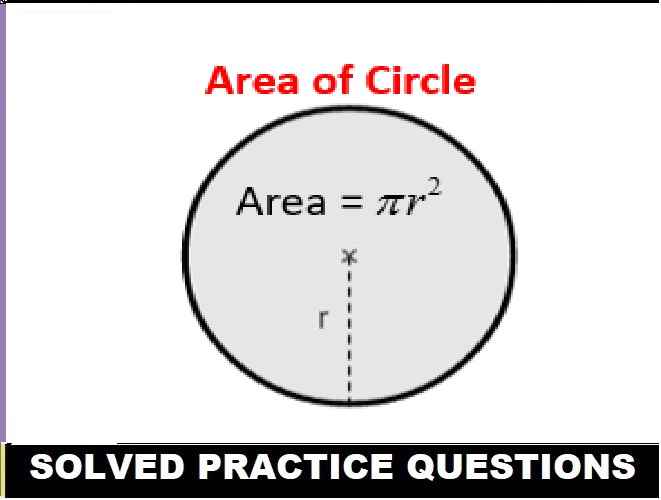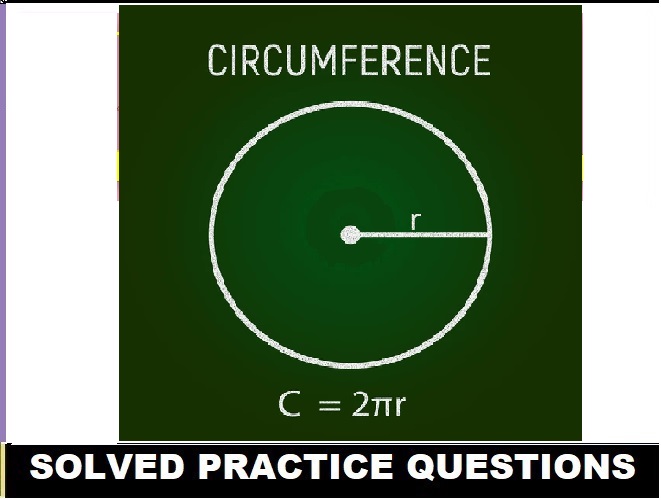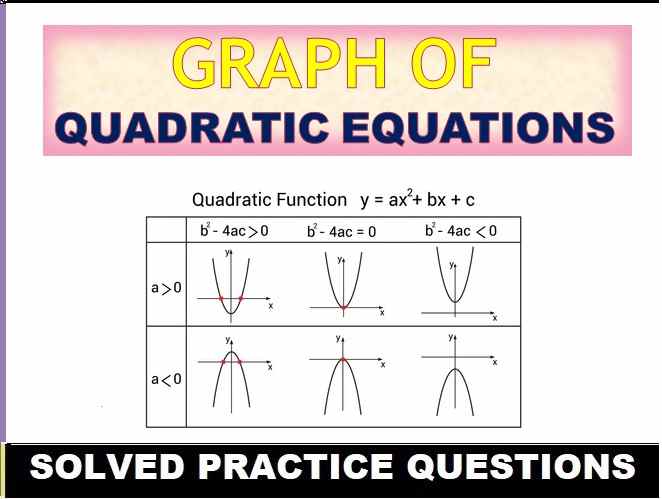ISC Computer Science Semester-1 Specimen Paper Solved Class -12 for practice. Step by step solutions of ISC Class-12 specimen model sample paper . During solutions of semester-1 Computer Science specimen paper we explain with figure , graph, table whenever necessary so that student can achieve their goal in next upcoming exam of council. Visit official website CISCE for detail information about ISC Board Class-12.
ISC Computer Science Semester-1 Specimen Paper Solved Class -12
| Board | ISC |
| Class | 12th (XII) |
| Subject | Computer Science |
| Topic | Semester-1 ISC Specimen Paper Solved |
| Syllabus | on bifurcated syllabus (after reduction) |
| session | 2021-22 |
| Question Type | MCQ/ Objective (as prescribe by council) |
| Total question |
Total 32 with all parts |
| Max mark |
70 |
Warning :- before viewing solution view Question Paper
1 The law which represents the Boolean equation A + B = B + A is:
(a) Associative Law
(b) Distributive Law
(c) Commutative Law
(d) Absorption Law
Answer-
(c) Commutative Law
2 The dual of the Boolean equation (X+Y) ·1 = X+Y is:
(a) X+Y + 0
(b) X·Y + 0 = X·Y
(c) (X·Y) + 1 = X·Y
(d) (X+Y) + 0 = X·Y
Answer-
(b) X·Y + 0 = X·Y
3 If A=1, B=0, C=0 and D=1, then the maxterm will be:
(a) AB’C’D
(b) A’BCD’
(c) A+B’+C’+D
(d) A’+B+C+D’
Answer-
(d) A’+B+C+D’
4 The compliment of the Boolean expression F(P,Q,R) = (P + Q + R) is:
(a) P’Q’R’
(b) P’ + Q’ + R’
(c) P + (Q’+R’)
(d) (P+Q) + R’
Answer-
(a) P’Q’R’
5 The propositional operator => represents:
(a) Conjunction
(b) Implication
(c) Disjunction
(d) Negation
Answer-
(b) Implication
6 Encoders are used for:
(a) Adding two bits
(b) Converting Decimal to Binary
(c) Converting Binary to Decimal
(d) Data transmission
Answer-
(c) Converting Binary to Decimal
7 NAND gate is formed by the combinations of:
(a) AND gate and OR gate
(b) OR gate and NOT gate
(c) NAND gate and NOT gate
(d) AND gate and NOT gate
Answer-
(d) AND gate and NOT gate
8 The combinational circuit which adds two binary bits is:
(a) Full Adder
(b) Decoder
(c) Half Adder
(d) Multiplexer
Answer-
(c) Half Adder
9 The Quad group in a Karnaugh’s map eliminates:
(a) One variable
(b) Four variables
(c) Three Variables
(d) Two variables
Answer-
(d) Two variables
10 The proposition (a <=> b ) is represented by: (ISC Computer Science Semester-1 Specimen )
(a) a’b’ + ab
(b) (a’+b’) · (a+b)
(c) (a+b)’
(d) (a·b)’
Answer-
(a) a’b’ + ab
11 If the input in a decoder is A’BC’D, then the decimal equivalent output will be:
(a) 8
(b) 10
(c) 5
(d) 6
Answer-
(c) 5
12 A matrix MAT[10][15] is stored in the memory in Row Major Wise with each element requiring 2 bytes of storage. If the base address at MAT[1][2] is 2215, then the address of MAT[3][7] will be:
(a) 2285
(b) 2315
(c) 2319
(d) None of the above
Answer-
(a) 2285
13 With reference to the given proposition ~P => Q , answer the following questions:
(a) the converse of the proposition is:
(i) Q => ~P
(ii) Q => ~P
(iii) ~Q => ~P
(iv) ~P => ~Q
Answer-
(i) Q => ~P
(ii) Q => ~P
Both options is correct
(b) the contra-positive of the proposition is:
(i) ~P => Q
(ii) Q => P
(iii) ~Q => P
(iv) ~Q => P
Answer-
(iii) ~Q => P
14 The reduced expression for the Boolean expression F(X,Y,Z) = ∑(0,1,2,3,4,5,6,7) is:
(a) XY’ + X’Y
(b) 1
(c) 0
(d) None of the above
Answer-
(b) 1
15 What is the output of the code given below?
int i,j;
for( i=1; i<=5;i++);
for(j=i+1;j<1;j++);
System.out.print(i + “+” + j) ;
(a) 67
(b) 1+2
(c) 6+7
(d) 12
Answer-
(c) 6+7
16 What is the output of the statement given below? (ISC Computer Science Semester-1 Specimen )
System.out.print(Integer.parseInt(“234”)+’A’);
(a) 234+65
(b) 234A
(c) 299
(d) ERROR
Answer-
(c) 299
17 What is the output of the statement given below?
System.out.print(‘A’+’1’+’C’);
(a) 65+1+66
(b) 10+1+67
(c) 181
(d) 65+49+67
Answer-
(c) 181
18 The basic logic gate that represents the simplification of the Boolean expression A.(A’+B). (A+B) is:
(a) OR gate
(b) NOT gate
(c) AND gate
(d) None of the above
Answer-
(c) AND gate
19 What is the conditional statement to check for the Non-boundary elements in a double dimensional array of ‘M’ number of rows and ‘N’ number of columns? The row index is represented by ‘r’ and the column index is represented by ‘c’.
(a) (r>0 || r<M-1 && c>0 || c<N-1)
(b) (r>0 && r<M-1 || c>0 && c<N-1)
(c) (r>0 && r<M-1 && c>0 && c<N-1)
(d) (r>0 || r<M-1 || c>0 || c<N-1)
Answer-
(c) (r>0 && r<M-1 && c>0 && c<N-1)
20 The proposition ~( a ∧ b ) V (~a => b) is a:
(a) Contradiction
(b) Contingency
(c) Tautology
(d) Implication
Answer-
(c) Tautology
21 Reduce the given Boolean function F(A,B,C,D) = ∑(0,2,4,8,9,10,12,13) by using 4-variable Karnaugh map and answer the following questions:
(a) What will be the least number of groups and their types formed for reduction?
(i) 6 pairs
(ii) 2 quad and 2 pairs
(iii) 1 quad and 3 pairs
(iv) 3 quads
Answer-
(iv) 3 quads
(b) The reduced expression of the Boolean function given above is:
(i) ACD’ + B’D’ + BD
(ii) (A+C’+D’).(B’+D’).(A+C’)
(iii) C’D’ + AC’ + B’D’
(iv) (C+D’). (B’+D’).(A+B+D)
Answer-
(iii) C’D’ + AC’ + B’D’
22 A school intends to select candidates for an Inter school competition as per the criteria given below:
………………….. questions:
(a) The POS expression for X(A,B,C,D) will be:
(i) F(A,B,C,D) = ∑ (3, 5, 7, 11, 12, 13, 14, 15)
(ii) F(A,B,C,D) = π (3, 5, 7, 11, 12, 13, 14, 15)
(iii) F(A,B,C,D) = π (0, 1, 2, 4, 6, 8, 9, 10)
(iv) F(A,B,C,D) = ∑ (0, 1, 2, 4, 6, 8, 9, 10)
Answer-
(iii) F(A,B,C,D) = π (0, 1, 2, 4, 6, 8, 9, 10)
(b) The maximum input combinations for the above truth table will be:
(i) 24
(ii) 16
(iii) 8
(iv) 4
Answer-
(ii) 16
23 Reduce the given Boolean function F(A,B,C,D) = π(3,4,5, 6, 7, 11,13,15) by using 4-variable Karnaugh map and answer the following questions:
(a) What will be the least number of groups and their types formed for reduction?
(i) 6 pairs
(ii) 3 quads
(iii) 1 quad and 3 pairs
(iv) 2 quad and 3 pairs
Answer-
(ii) 3 quads
(b) The reduced expression of the Boolean function given above is: [2]
(i) (B+C).(B+D).(A’+D)
(ii) BC + BD + A’D
(iii) AB’ + C’D’ + B’D’
(iv) (A+B’).(C’+D’).(B’+D’)
Answer-
(iv) (A+B’).(C’+D’).(B’+D’)
24 From the logic diagram given above, where A,B and C are inputs and F is the output, answer the following questions: (ISC Computer Science Semester-1 Specimen )
(a) The expression at (1) is:
(i) A.B
(ii) A’+B’
(iii) A+B’
(iv) A+B
Answer-
(iv) A+B
(b) The expression at (3) is:
(i) A+B.C’
(ii) ((A+B)’.C)’
(iii) ((A+B).C)’
(iv) (A+B).C
Answer-
(iv) (A+B).C
(c) The final expression F(A,B,C) is:
(i) F=((A+B)’.C)’ + (A+B)
(ii) F= (A+B)’.(C+A+B)
(iii) F=( (A+B).C)’ + (A+B)
(iv) F= (AB + C)’ +(A+B)
Answer-
(iii) F=( (A+B).C)’ + (A+B)
25 Given the Boolean expression F = ( P + R) · ( P·Q + Q·R’ ), identify:
(a) The complement of the expression:
(i) P’R’ + (P’+Q’).(Q’+R)
(ii) (P’+R’) . (P’+Q’) + (Q+R’)
(iii) P’R’ .(PQ’ + Q’R)
(iv) (P+R)’ .(P’+Q).(Q’+R)
Answer-
(i) P’R’ + (P’+Q’).(Q’+R)
(b) The law used:
(i) Distributive Law
(ii) De Morgan Law
(iii) Associative Law
(iv) Idempotent Law
Answer-
(ii) De Morgan Law
26 With reference to the program code given below, answer the questions that follow
void fun(int n)
{ int i,f,;
for( i=1,f=1;i<=n;i++,f*=i);
System.out.print(f);
}
(a) What is the output of the method fun() when the value of n=4?
(i) 24
(ii) 72
(iii) 120
(iv) ERROR
Answer-
(i) 24
(b) What is the method fun() performing?
(i) Checking for Prime Numbers
(ii) Product of odd numbers
(iii) Factors of a number
(iv) Finding the factorial
Answer-
(iv) Finding the factorial
27 With reference to the program code given below, answer the questions that follow:
int test(int n)
{ if(n==1) return 0;
for (int i=2;i<=(int)(Math.sqrt(n));i++)
if( n%i==0)
return 0;
return 1;
}
(a) What will the method test() return when the value of n=9?
(i) 1
(ii) true
(iii) 0
(iv) Error
Answer-
(iii) 0
(b) What is the method test() performing?
(i) Prime number/Composite number
(ii) Armstrong number
(iii) Palindrome number
(iv) Perfect number
Answer-
(i) Prime number/Composite number
28 With reference to the program code given below, answer the questions that follow:
void dimen(int n[ ][ ])
{ int p=0;
for (int i=0;i<n.length;i++)
for(int j=0;j<n[0].length;j++)
{ if(i==0 ||i==n.length-1 || j==0 || j==n[0].length-1)
p=p+n[i][j];
}
System.out.print(p);
}
(a) What will be the output of the method dimen() when the value of
n[ ][ ] ={{2,3,7},{1,5,9},{10,-3,8}} ?
(i) 42
(ii) 33
(iii) 5
(iv) 37
Answer-
(iv) 37
(b) What is the method dimen( ) performing?
(i) Finding the product of the boundary elements
(ii) Finding the sum of the non-boundary elements
(iii) Finding the sum of the boundary elements
(iv) Finding the sum of the matrix elements
Answer-
(iii) Finding the sum of the boundary elements
29 With reference to the program code given below, answer the questions that follow: (ISC Computer Science Semester-1 Specimen )
void single(int x[])
{ int w=1;
for(int y=0;y<x.length;y++)
{ if(x[y]%2==0 && x[y]>0)
w=w*x[y];
}
System.out.print(w);
}
(a)
What will be the output of the method single() when the value of
x[] = {10,2,9,-6,5,6} ?
(i) 120
(ii) 45
(iii) 720
(iv) 18
Answer-
(i) 120
(b) What is the method single( ) performing?
(i) Sum of the positive odd elements
(ii) Product of the even elements
(iii) Product of the positive even elements
(iv) Sum of the positive even elements
Answer-
(iii) Product of the positive even elements
30 With reference to the program code given below, answer the questions that follow:
int solve(int a, int b)
{ int i,l=0;
for(i=1;i<=a*b;i++)
{ if(i%a==0&& i%b==0)
{ l=i; break;}
}
return l;
}
(a) What will be the output of the method solve() when the value of a=8 and b=12?
(i) 4
(ii) 96
(iii) 0
(iv) 24
Answer-
(iv) 24
(b) What is the method solve( ) performing?
(i) HCF of ‘a’ and ‘b’
(ii) Prime Factors of ‘a’ and ‘b’
(iii) LCM of ‘a’ and ‘b’
(iv) None of the above
Answer-
(iii) LCM of ‘a’ and ‘b’
31 The following program code checks if the positive integer ‘N’ is a palindrome number by returning true or false. There are some places in the code marked as ?1?, ?2?, ?3?, ?4? and ?5? which are to be replaced by a statement/expression so that the code works properly. (ISC Computer Science Semester-1 Specimen )
boolean Palindrome(int N)
{ int rev = ?1? ;
int num = N;
while (num>0)
{ int f = num/10;
int s = ?2? ;
int digit = num − ?3? ;
rev = ?4? + digit;
num /= ?5?;
}
if(rev == N)
return true;
else
return false;
}
Answer the following question:
(a) What is the statement or expression at ?1?
(i) -1
(ii) 0
(iii) 10
(iv) 2
Answer-
(ii) 0
(b) What is the statement or expression at ?2?
(i) s *10
(ii) f /10
(iii) rev
(iv) f *10
Answer-
(iv) f *10
(c) What is the statement or expression at ?3?
(i) s
(ii) rev
(iii) f
(iv) digit * 10
Answer-
(i) s
(d) What is the statement or expression at ?4?
(i) s * 10
(ii) rev *10
(iii) f
(iv) rev
Answer-
(ii) rev *10
(e) What is the statement or expression at ?5?
(i) 1
(ii) 100
(iii) 10
(iv) rev
Answer-
(iii) 10
32 The following program code sorts a single dimensional array in ascending order using Insertion Sort technique. There are some places in the code marked as ?1?, ?2?, ?3?, ?4? and ?5? which are to be replaced by a statement/expression so that the code works properly.
void insertionSort(int array[])
{ int n = ?1?;
for (int j = 1; j < n; j++)
{
int key = ?2?;
int i = j-1;
while ( (i > -1) && ( array [i] > ?3? ) )
{
array [i+1] = ?4?;
i–;
}
?5? = key;
}
Answer the following question:
(a) What is the statement or expression at ?1?
(i) array.length()
(ii) array.length
(iii) length
(iv) -1
Answer-
(ii) array.length
(b) What is the statement or expression at ?2?
(i) j
(ii) array[j+1]
(iii) array[j]
(iv) 0
Answer-
(iii) array[j]
(c) What is the statement or expression at ?3?
(i) key
(ii) array[j]
(iii) i+1
(iv) n
Answer-
(i) key
(d) What is the statement or expression at ?4?
(i) j+1
(ii) key
(iii) array[j]
(iv) array[i]
Answer-
(iv) array[i]
(e) What is the statement or expression at ?5?
(i) array[i+1]
(ii) i+1
(iii) j
(iv) array[i]
Answer-
(i) array[i+1]
PDF of ISC Computer Specimen Paper Sem-1 Class-12
step by step solutions explain of PDF of ISC Computer Specimen Paper Sem-1 Class-12 session-2121-22
Also visit
ISC Specimen Paper Semester-1 Solved Class-12
ISC Class-12 Textbook Solutions, Paper, Notes , Syllabus
ISC Board Paper Class-12 Solved Previous Year Question
Thanks
Please share with your ISC friends if it is helpful



Show no. 12 answer with explanation
now please focus on sem-2 descriptive question of which specimen paper has been solved